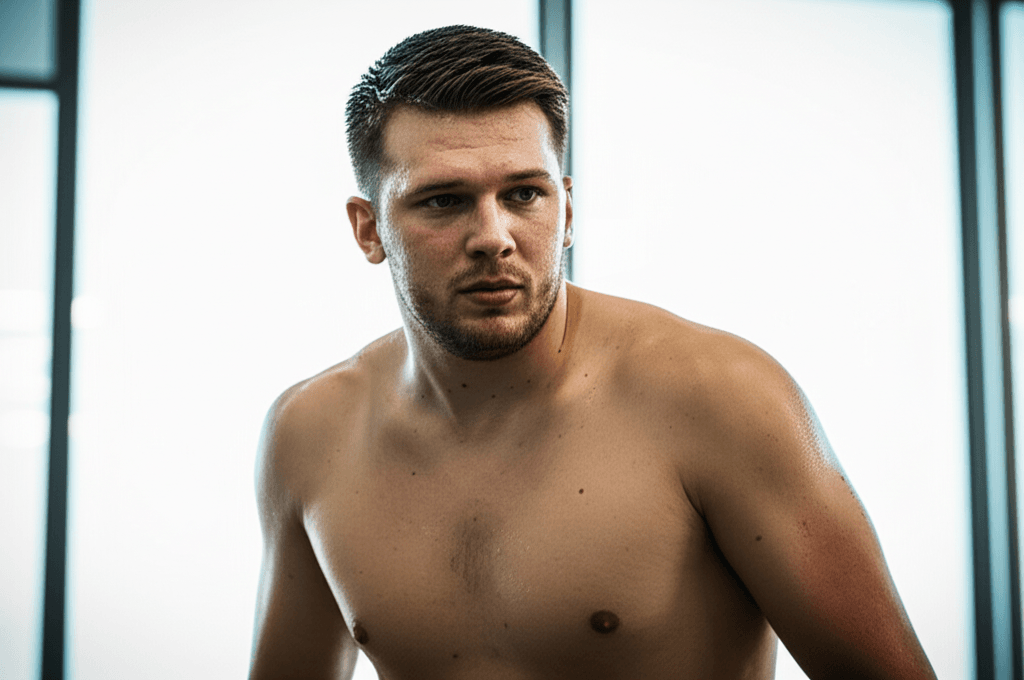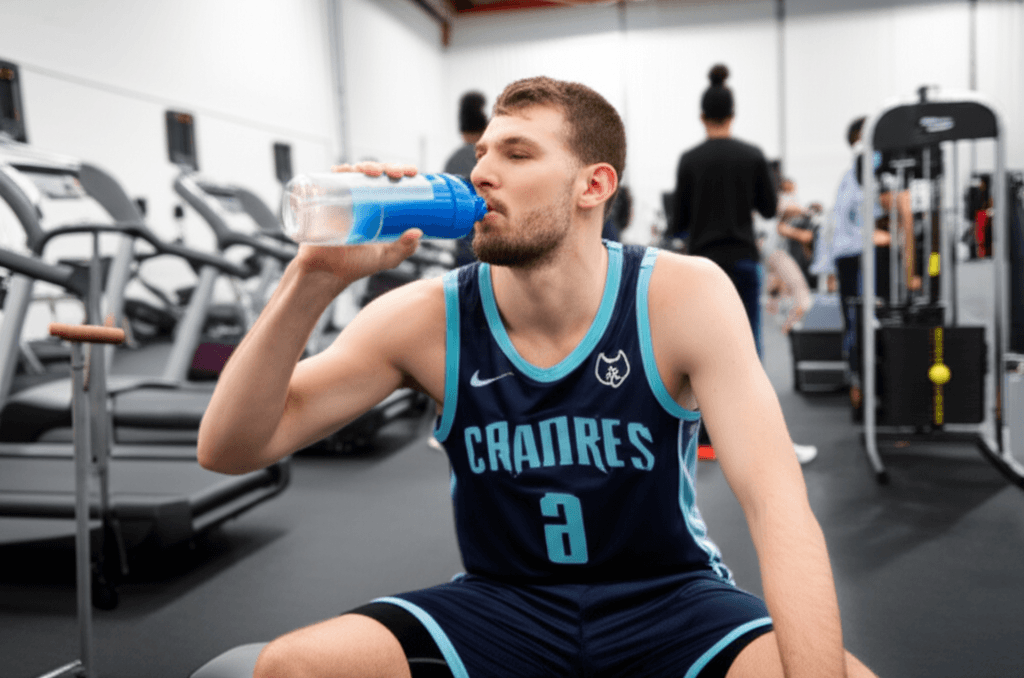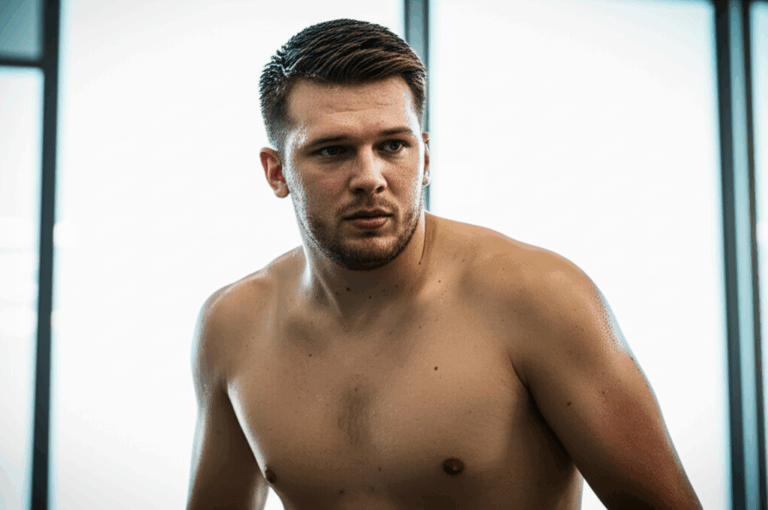NBA superstar Luka Dončić has made headlines recently for his remarkable body transformation, shedding significant weight during the offseason. The Los Angeles Lakers guard attributes his leaner physique not to weight-loss drugs like Ozempic, but to a disciplined regimen combining intermittent fasting with a strict, nutrient-focused diet and intense training. His commitment offers valuable insights into effective strategies for personal weight management.

The Cornerstones of Dončić’s Transformation
Dončić’s weight loss journey is built upon a multi-faceted approach, with intermittent fasting at its core, supported by strategic dietary modifications and rigorous workouts.
Intermittent Fasting: The 16:8 Method
A key component of Dončić’s plan is intermittent fasting, specifically a 16-hour fasting window followed by an 8-hour eating window. For Dončić, this typically means abstaining from calories from 8:30 PM until noon the next day.
- What is Intermittent Fasting? Intermittent fasting is an eating pattern that cycles between periods of eating and voluntary fasting. It’s not about what you eat, but when you eat. Common methods include:
- 16:8 Method: Fasting for 16 hours and eating all meals within an 8-hour window. This is the method Dončić employs.
- 5:2 Method: Eating normally for five days a week and restricting calorie intake to 500-600 calories on two non-consecutive days.
- Alternate-Day Fasting: Limiting calorie intake to around 500 calories every other day, or sometimes a complete 24-hour fast.
- How Does it Aid Weight Loss? Intermittent fasting can lead to weight loss primarily by helping individuals consume fewer calories overall. By shortening the eating window, it naturally reduces opportunities for overeating. Research suggests that short-term fasting can induce ketosis, where the body burns stored fat for energy due to a lack of glucose. It may also influence metabolic processes, potentially decreasing inflammation and improving blood sugar regulation.
- Beyond Weight Loss: Studies indicate that intermittent fasting may offer other health benefits, including improvements in blood sugar control, insulin sensitivity, and even a leaner body composition with maintained muscle mass in some cases.
Strategic Dietary Changes
In conjunction with intermittent fasting, Dončić significantly altered his food choices. He adopted a gluten-free and low-sugar diet, prioritizing high-protein meals.
- Gluten-Free and Low-Sugar: Dončić’s diet emphasizes avoiding gluten (found in wheat products) and minimizing added sugars. This approach often naturally reduces the intake of processed foods and refined carbohydrates, which can be high in calories and contribute to weight gain.
- High-Protein Intake: Dončić consumes at least 250 grams of protein daily, primarily from lean animal products like eggs and chicken, supplemented with almond milk protein shakes.
- Why Protein is Key for Weight Loss: Protein is known for its satiety-inducing properties, helping individuals feel fuller for longer and reducing overall calorie intake. It also plays a crucial role in maintaining and building muscle mass, which is metabolically active and helps burn more calories even at rest.
- Emphasis on Whole Foods: His diet also includes healthy fats, omega-3s, and anti-inflammatory foods such as nuts, berries, and leafy greens. Fruits are often consumed as dessert, and generous portions of vegetables replenish essential vitamins and electrolytes lost during intense training. Focusing on nutrient-dense whole foods is a fundamental principle of healthy weight loss, providing essential nutrients while being lower in calories.

The Role of Exercise and Calorie Deficit
While diet played a crucial role, Dončić’s transformation was amplified by a demanding exercise regimen. He engages in two 90-minute workout sessions daily, blending weight training, agility work, and shooting drills. His morning workouts are often performed in a fasted state, a strategy believed to enhance fat burning and reduce inflammation.
Ultimately, weight loss, regardless of the method, comes down to achieving a calorie deficit – consuming fewer calories than the body expends. Dončić’s combined approach of intermittent fasting, a controlled diet, and intense physical activity effectively created this deficit, leading to his noticeable weight loss and improved physique.

How You Can Achieve Similar Results
Emulating Dončić’s success involves a holistic approach to diet and lifestyle. While his specific regimen is tailored for an elite athlete, the underlying principles can be adapted for personal weight loss goals.
Implementing Intermittent Fasting
- Choose a Method: The 16:8 method is often recommended for beginners due to its relative ease of adherence. You can choose an 8-hour eating window that fits your schedule, such as 9 a.m. to 5 p.m., 10 a.m. to 6 p.m., or noon to 8 p.m.
- Start Gradually: If new to fasting, begin by slowly extending your overnight fast over a few days or weeks. For instance, start with a 12-hour fasting window and gradually increase it.
- Stay Hydrated: During fasting periods, it’s crucial to drink plenty of water, herbal teas, or black coffee (without added sugar or cream) to manage hunger and stay hydrated.
- Listen to Your Body: Intermittent fasting should not cause significant discomfort. If you experience excessive hunger or feel unwell, adjust your schedule or consider a different method.
Adapting Your Diet
- Focus on Whole, Nutrient-Dense Foods: Prioritize fruits, vegetables, lean proteins, and whole grains. These foods are typically lower in calories and higher in fiber, helping you feel full.
- Reduce Sugar and Processed Foods: Limit foods and drinks with added sugar and minimize highly processed items. These often contribute empty calories and can hinder weight loss.
- Prioritize Protein: Include a good source of lean protein in your meals to support satiety and muscle maintenance.
- Control Portions: Even with healthy foods, portion control is important to create a calorie deficit.
- Consider Gluten-Free (If Beneficial for You): While Dončić’s gluten-free choice may be due to personal preference or a nutritionist’s recommendation, it’s not a universal requirement for weight loss. Consult with a healthcare professional to determine if a gluten-free diet is appropriate for your needs.
Incorporating Physical Activity
- Regular Exercise: Aim for at least 150 minutes of moderate-intensity aerobic exercise most days of the week, such as brisk walking.
- Strength Training: Incorporate strength training exercises at least twice a week to build lean muscle mass, which helps burn more calories.
- Increase Overall Movement: Look for ways to move more throughout your day, such as taking stairs or parking further away.
General Weight Loss Principles
- Set Realistic Goals: Aim for a gradual, steady weight loss of about 1 to 2 pounds per week for sustainable results.
- Track Progress: Keeping a food and physical activity diary can help you monitor your intake and progress.
- Seek Support: Identify friends, family, or professionals who can support your weight loss efforts.
- Consult a Professional: Before starting any new diet or exercise regimen, especially if you have underlying health conditions, it’s advisable to speak with a healthcare provider or registered dietitian. They can provide personalized guidance and ensure the plan is safe and effective for you.
By understanding and applying these principles, inspired by Luka Dončić’s successful weight loss journey, individuals can work towards achieving their own health and fitness goals.







